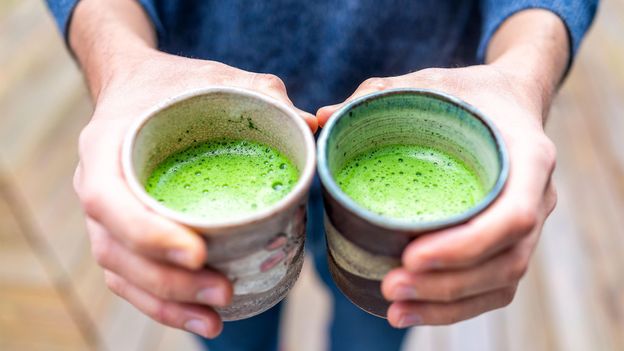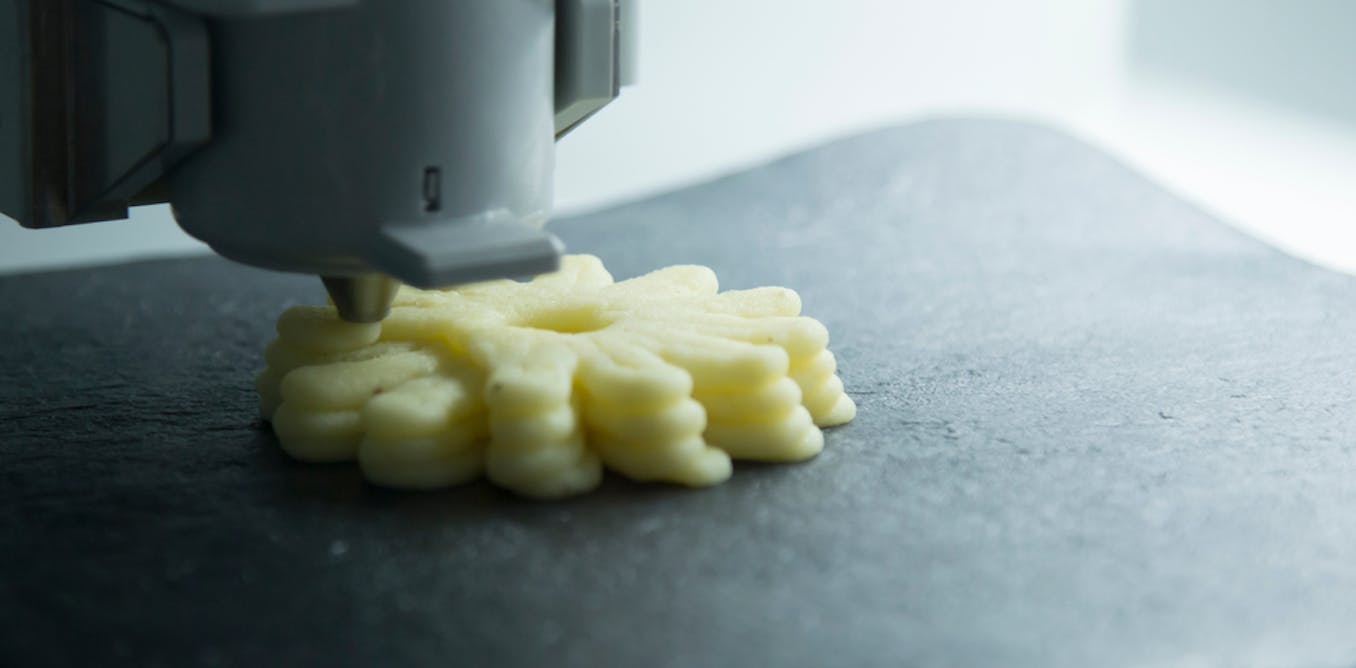Who Drank All the Matcha? How Tourism Drained a Japanese Town

In Uji, Japan’s historic matcha capital, a growing demand for premium green tea is rapidly outpacing its supply. This phenomenon has sparked concerns among locals about the dilution of their cherished traditions.
At precisely 10:00 AM, the matcha shops in Uji spring to life, marking a significant moment in this picturesque town. Just a half-hour train ride from the cultural heart of Kyoto, Uji has gained worldwide acclaim for its matcha—the finely powdered green tea that is traditionally whisked with hot water to create a frothy beverage.
On a recent visit, I made my way to the celebrated Nakamura Tokichi Honten, a tea shop that once served the imperial family and has since earned its reputation as one of Japan’s premier matcha suppliers. Feeling the pressure of time, I hurriedly grabbed a numbered ticket to secure my spot at their café, noticing with anxiety that two eager girls had dashed ahead of me. To my dismay, I soon realized that there were already 35 people lined up before me despite the café not yet being open.
While I waited, I took the opportunity to browse through the shop and explore the impressive array of matcha products on display—everything from creamy matcha ice cream to delectable matcha-infused noodles. However, my focus was on acquiring some of the elusive powder itself: matcha.
Suddenly, chaos erupted in a corner of the shop. A small Japanese store employee was attempting to restock a shelf but barely managed to set down a tin before it was snatched up by a throng of eager tourists. The scene was frenzied; hands darted in from all directions, and some people even reached directly into the employee’s basket to grab the precious canisters. Her cries for restraint fell on deaf ears as her message was lost among the excited chatter of foreign visitors.
Recognizing that these were likely the last tins of matcha available, I plunged into the crowd and managed to grasp a white canister tightly. However, before I could catch my breath, a voice rang out from behind me. An American woman exclaimed dramatically, “It’s gone. All the matcha’s gone.” I glanced at my watch; it was barely 10:05 AM.
As I joined the queue to pay for my 30g tin, I was uncertain about what I had actually secured or how much I would be charged. Judging by the vibrant shades of green around me, I suspected my canister contained a less potent grade of matcha. Jealously, I observed a man at the front of the line who proudly boasted about purchasing approximately 30 tins, encased in a tax-free plastic bag. He remarked in a German accent, “I can’t believe I just spent 250 euros on tea.” The pride in his voice was evident.
Unlike many other high-end tea retailers in Uji, Nakamura Tokichi has not imposed a limit on the number of matcha tins that visitors can purchase, allowing for a free-for-all situation. I spent the rest of the morning exploring the town, collecting whatever matcha I could find from various shops. At Tsujirihei Honten—another prestigious brand that has been operating since 1860—I discovered that they advertised an impressive 20 varieties of matcha, yet only had three or four options available for sale. This scarcity was a common theme among most stores, even in the celebrated matcha capital of the world.
Matcha's increasing popularity can be attributed to its numerous health benefits, and the vibrant green drinks and desserts have taken social media by storm. According to Japan's Ministry of Agriculture, Forestry and Fisheries, the production of matcha reached 4,176 tons in 2023—three times the amount produced in 2010. Furthermore, Japan's tourism industry has skyrocketed, welcoming nearly 37 million visitors in 2024, a record high.
Although there is no universal grading system for matcha, many shops categorize their products into three broad types: ceremonial, premium, and culinary. Ceremonial matchas, often sourced from the newest leaves of the season, are prized for their rich, umami flavors and lack of bitterness. Conversely, culinary matcha, which is coarser and slightly bitter, is more suited for baking and sweet confections. Premium or daily-use grades occupy a middle ground, offering versatility in use.
Tomomi Hisaki, the general manager at Tsujirihei’s flagship store, noted that international visitors often favor high-grade ceremonial matchas and tend to buy in bulk. Unfortunately, she lamented that their supply cannot keep pace with the soaring demand. “High-grade Uji matcha is not something that can be mass-produced,” she explained. The tea leaves used for ceremonial matcha are grown under shade to create a richer flavor profile, but this also limits the quantity that can be harvested. “If you cover them, they can’t photosynthesize, leading to a smaller harvest,” she added.
Another challenge to production, Hisaki pointed out, is the traditional stone mills that are used to grind matcha into a fine powder. Each mill can only yield around 400 grams of tea after an arduous eight-hour grinding session, which amounts to just 13 tins. Although expanding tea farms could theoretically increase production, such investments would take years to bear fruit.
This scarcity of Uji-made ceremonial matcha cultivates an air of exclusivity that intensifies the enthusiasm of tourists. Hisaki revealed that their store sells an entire month’s supply of matcha powder in just one day. If this trend continues, there could be consequences for tea ceremony instructors, temples, and shrines struggling to secure supplies.
“We have heard reports of ceremonial matcha being used in lattes and smoothies, which diminishes the availability of high-quality matcha for those wishing to enjoy it in its traditional form,” stated Simona Suzuki, the president of the Global Japanese Tea Association. “We hope that foreign tourists will consider the intended use when purchasing matcha.”
As I reflected on the man at the front of the line and those like him hoarding hundreds of dollars’ worth of matcha, I couldn’t help but wonder about their intentions. What does one do with such vast quantities of high-quality tea? It seemed unlikely he was purchasing it for traditional tea ceremonies; instead, I speculated that he—and others like him—might prefer to dilute their matcha with milk and sugar for lattes or even bake cookies with it. Most casual drinkers, including myself, may lack the refined palate to discern the subtle differences in matcha quality, and the grassy green powder tends to lose its freshness when stored in a pantry for months.
Despite the frenzied atmosphere in Uji, I ultimately found joy in sampling the local offerings. When the opportunity arises, it can be all too easy to let greed overshadow our better judgment. How many tins might I have claimed if the circumstances had permitted?
“I think it’s wonderful that the matcha of Japan is spreading,” Hisaki remarked. “I would like more people to enjoy it for health, tea ceremonies, and cultural heritage.” Yet, she emphasized the importance of not hoarding supplies purely for resale.
My shopping experience in Uji proved to be more stressful than I had anticipated, as I constantly worried about acquiring the last remaining tins of matcha available. Nevertheless, even if visitors miss out on bringing back ceremonial matcha, Uji offers a plethora of other delightful products. As Suzuki suggested, travelers should explore alternative options such as vibrant senchas, earthy gyokuros, or hojicha, the roasted cousin to matcha that boasts nutty and chocolatey flavors—arguably even more delectable than matcha.
Despite the matcha shortage, Uji remains a tea lover’s paradise filled with an endless array of products. At Nakamura Tokichi, I ordered a tea-infused soba noodle dish alongside a matcha parfait. From various souvenir shops, I collected matcha fettuccine and curry. Eateries around town serve up unique dishes like matcha gyozas, takoyaki, and ramen.
At Tsujirihei, I purchased a bag of sweetened matcha powder designed for easy dissolution in water—a perfect base for matcha lattes or other sweet beverages. Now, as I sip on this instant matcha latte, buoyed by its vibrant hue and the comfort of its warmth, I can’t help but smile. While it may not have been served to the emperor, it certainly suits my purposes just fine.
If you enjoyed this story, consider subscribing to The Essential List newsletter. It features a curated selection of engaging articles, videos, and must-know news delivered to your inbox twice a week.




























